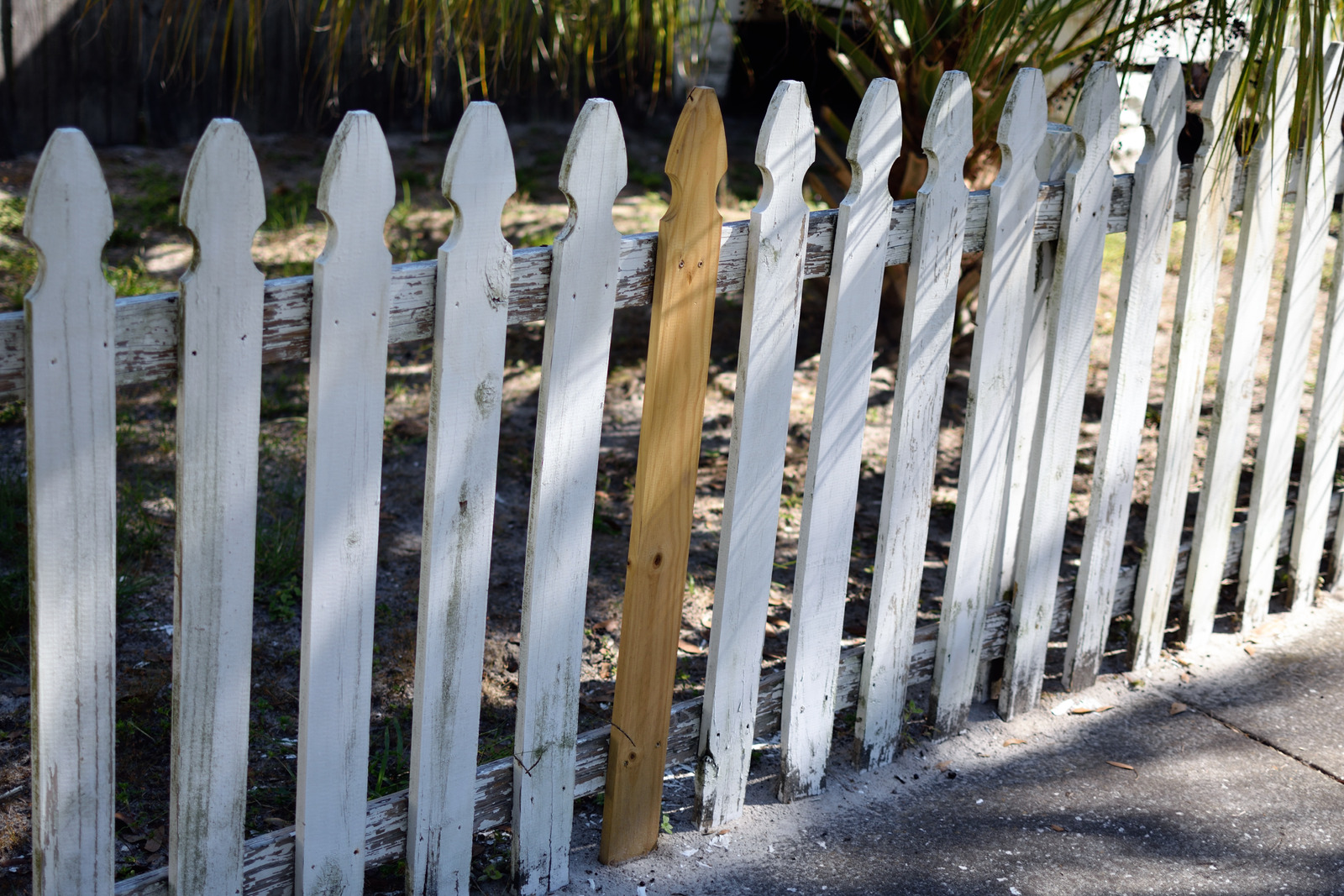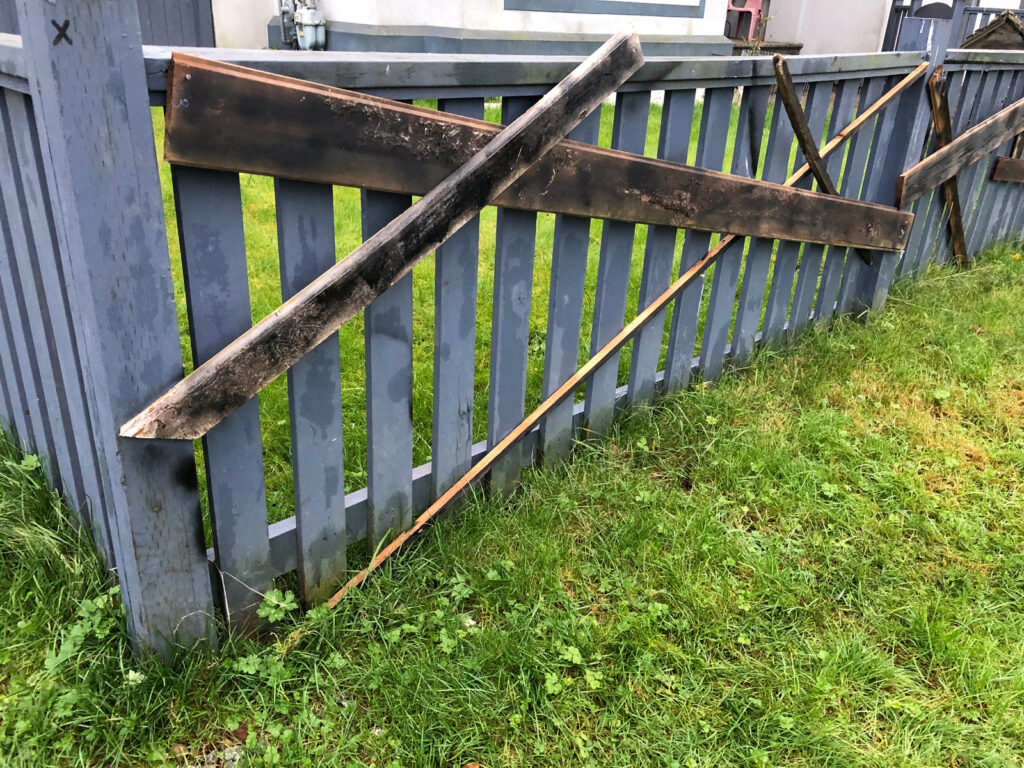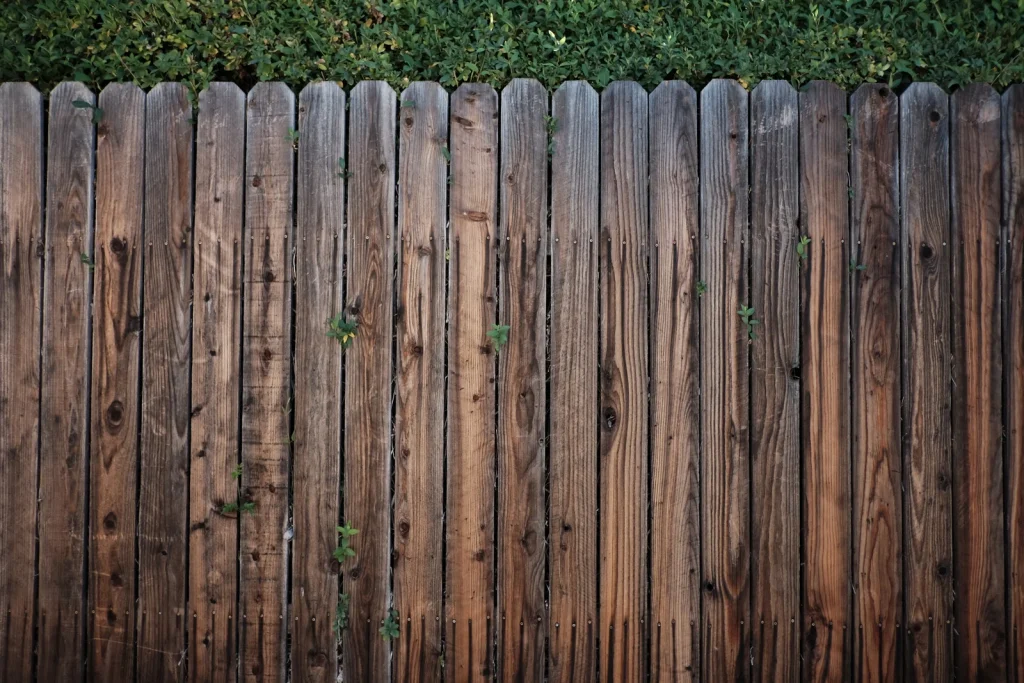
Secure Your Space: DIY Fence Repair Tips and Tricks

Common fence issues such as rot, insect damage, warping, rust, bent sections, and broken parts compromise fences’ structural integrity and longevity. Fence repair and maintenance are essential for addressing these issues, encompassing everything from fixing basic damage to replacing pickets or boards.
Engaging in DIY fence repair ensures the fence’s structural integrity is maintained, preventing it from pulling away from posts—a common problem that undermines safety and aesthetics. This guide offers valuable tips and tricks for fence repair and maintenance, ensuring your space remains secure and visually appealing.
Assessing Fence Damage
Regular Inspection for Stability and Insect Damage
- Check for Unstable Posts: Regularly inspect fence posts for signs of instability, which can lead to the collapse of the entire fence structure.
- Look for Wood-Boring Insects: Identify any wood-boring insects, as they can cause significant damage to wooden fences.
Identifying and Addressing Common Physical Damages
- Leaning Fence: Inspect and fix leaning fences by checking the post at the centre of the lean and considering straightening or replacing the post.
- Damaged Boards: Replace broken, cracked, or splintering boards to maintain the fence’s stability and appearance.
- Fence Pulling Away: Solutions include ratcheting tie-down straps, replacing small brackets with larger ones, and fixing leaning or sinking posts.
Addressing Environmental and Structural Issues
- Corrosion and Stains: Tackle corrosion on metal fences by refinishing with a water-resistant finish—clean stains on metal and wood fencing with regular maintenance.
- Wood Rot and Peeling Finishes: Address wood rot by early detection and treatment and fix peeling paint or stain to protect the wood from further damage.
- Gaps and Wildlife Damage: Check for gaps in wood fencing and signs of wildlife damage, which should be addressed promptly to prevent further issues.
Compliance and Maintenance
- City Bylaws Compliance: Ensure the fence repair does not violate local bylaws, which may require adjustments or repositioning.
- Regular Maintenance: Conduct regular inspections and maintenance to prevent minor issues from escalating into major problems, thus extending the fence’s lifespan.
Essential Tools and Materials for DIY Fence Repair
Basic Tools and Materials
- Hammer and Nails: Essential for attaching components and making quick fixes.
- Screwdriver and Screws: Needed for securing parts more robustly 1.
- Saw and Pliers: For cutting damaged parts and adjusting metal components.
- Concrete Mix and Level: For setting posts firmly and ensuring they are perfectly vertical.
- Wood Treatment and Paint: Protects wood from elements and refreshes its appearance.
Specialized Tools for Specific Repairs
- E-Z Mender for Temporary Post Fixes: A quick solution for broken posts is offered.
- Wood Filler or Putty: Fills minor cracks or holes in wooden fences.
- Metal Post Bases and T-Braces: Provides additional support to fence structures.
- Wood Preservative: Prevents rot and extends the life of wood.
Advanced Tools for Comprehensive Repairs
- Post Hole Digger and Auger: Essential for installing new posts.
- Chainsaw and Hacksaw: Facilitate cutting through thick wood and metal.
- Electric Screwdriver and Drill: Speed up the installation of screws and drilling tasks 1.
- Fence Pliers and Wire Crimping Tool: Useful for fence adjustments and wire works.
Additional Repair Materials
- Vinyl and Metal Repair Kits: Necessary for specific fence types like vinyl and metal.
- Protective Gear: Heavy-duty gloves and safety glasses to ensure safety during repairs.
Measurement and Planning Tools
- Measuring Tape and Mason’s Line: For precise layout and spacing.
- Spirit Level and Post Level: Ensure everything is evenly aligned and straight during installation.
Maintenance Supplies
- Rot-Resistant Lumber and Coatings: Minimize future damage.
- Proper Drainage Materials: Essential for preventing water-related damages.
Equipping yourself with these tools and materials can effectively tackle the most common fence repair issues, ensuring durability and stability for your fence.
Step-by-Step Guide to Repairing Common Fence Issues
Bracing and Reinforcing Fence Panels
- Bracing a Fence Panel: Use scrap material cut to 24- 48 inches to brace the fence panel, ensuring stability before further repairs.
- Reinforcing a Fence Panel: Install a third rail between the existing top and bottom rails to reinforce loose fencing.
Replacing Broken or Damaged Components
- Replacing Broken Posts: Remove the damaged post, ensure the new post is aligned properly, and secure it with concrete for stability.
- Replacing Damaged Rails: Remove the screws or nails from the damaged rail, measure and cut a new rail, and attach it using screws or nails.
- Securing Loose Pickets: Check for loose pickets by pushing on them, remove the old fasteners, and reattach the picket using new screws or nails.
Repairing Fence Gates
- Fixing Sagging Gates: Install an anti-sag kit with a turnbuckle and cable to correct the alignment of a drooping wooden gate.
- Adjusting Gate Hinges: If a gate swings too far, adjust the hinge pins with a socket wrench and reposition them for proper operation.
Comprehensive Panel Replacement
- Removing Old Panels: Detach the panel by removing screws or cutting them with a saw.
- Installing New Panels: Set the new panel on support blocks, secure it with screws, and remove the blocks once stable.
Addressing Specific Fence Types
- Chain-Link Fence Repair: For a bent section, remove the damaged part, cut a new mesh section, and weave it into the existing fence.
- Wooden Fence Maintenance: Clean the fence, apply a wood cleaner, and after drying, seal with a polyurethane sealant to protect against sun damage.
Preventative Measures and Finish
- Applying Protective Coatings: Protect wooden fences from elements by applying a sealant or paint, and use a rust-resistant finish for metal fences.
- Final Adjustments: Ensure all components are secure and make final adjustments to alignments and tightenings to ensure the fence is robust and durable.
Maintaining Your Fence Post-Repair
Regular Maintenance Schedule
- Regular Inspections: Conduct inspections frequently to identify any potential issues such as loose screws, rust, or rot. Address these issues immediately to prevent further damage.
- Cleaning and Painting: Clean the fence regularly to remove dirt and debris. Repaint or restain the fence every 2-3 years to protect against weathering and to maintain its appearance.
- Lubrication: Grease gate hinges and other moving parts to ensure smooth operation and to prevent rust and squeaking.
Seasonal Care for Longevity
- Winter: Remove snow buildup to avoid excess weight on the fence, which can lead to structural damage.
- Fall: Clear away fallen leaves and debris to prevent moisture entrapment that can cause rot and decay.
- Summer: Apply a fresh coat of protective coating to shield the fence from sun damage and to maintain its integrity.
Proactive Damage Prevention
- Vegetation Control: Trim plants and bushes near the fence to prevent overgrowth that can push against and damage the structure.
- Pest Management: Regularly check for and address any signs of pest infestations, particularly for wooden fences.
Advanced Maintenance Techniques
- Fence Post Care: Use pressure-treated wood for posts and apply waterproofing treatments to prevent rot below the ground level.
- Fence Material-Specific Care: Different materials, such as wood, vinyl, and metal, require unique maintenance approaches to ensure durability and aesthetic appeal.
- Professional Consultation: Consider hiring a professional to ensure high-quality care for complex issues or regular maintenance schedules.
Strategic Upkeep Actions
- Replacement and Repairs: Replace gravel boards and other components as needed to maintain the overall health of the fence.
- Hardware Checks: Regularly inspect and tighten hardware like screws and latches to ensure the fence’s functionality and security.
Conclusion
Throughout this article, we’ve explored a comprehensive array of DIY fence repair tips and tricks, covering everything from assessing and addressing common types of fence damage to equipping oneself with essential tools and engaging in regular maintenance to ensure the longevity and integrity of your fencing. These strategies are crucial not only for maintaining the aesthetic appeal of your space but also for ensuring its security and stability. By understanding and implementing these repair techniques, homeowners can effectively maintain their fences, preventing minor issues from escalating into significant problems.
Regular fence maintenance and prompt repair must be addressed, as they are key to ensuring that fences continue effectively serving their purpose. Whether the issue is related to weather damage, wear and tear, or insect infestation, the outlined steps provide a solid foundation for tackling these challenges. Moreover, the emphasis on adhering to local bylaws and considering material-specific care underscores the holistic approach needed for effective fence management. Engaging in these practices not only enhances the appearance and longevity of your fence repair but also contributes positively to your property’s overall safety and value.


